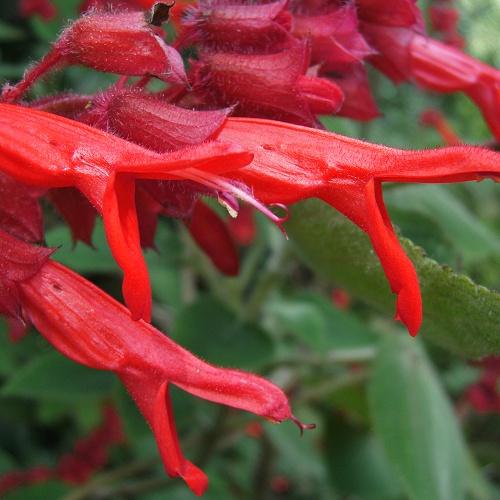Germinating the seeds
Plant your seeds when you receive them for the best germination Getting started -- These seeds should be given a special pre-treatment to remove their waxy coating, which can inhibit germination. First, place the seeds in a cup of hot tap water for 15-20 seconds. Quickly remove them using a strainer, then immediately rub them several times across a cotton towel. An easy way to do this is to fold the towel over them and rub. Repeat this process 2 more times. Then soak the seeds in room-temperature water for 24 hours (not more than 48 hours). They are now ready to plant. Use pots or cups at least 2 inches tall (5 cm)
with drainage holes. For soil, use a well draining mix. I use a mix
of 1 part
coir fiber Plant them about 1/4 inch (6 mm) deep. Water the soil until evenly moist (but not soggy). They germinate well at about 65-78° F (18-26°C) during the day. A little cooler at night is ok. Avoid letting them get above 80° F (27°C) for prolonged periods. I recommend placing a minimum/maximum thermometer near the pot. Keep the pots in bright light out of direct sun. If you enclose the pot in a bag or clear plastic container to maintain moisture, leave it open slightly for fresh air to enter, to prevent stem rot later. They can sprout at various times. Most should sprout the first month. Occasionally they can take up to 3 months, so don't give up on them! Once they sprout, give bright light, with no direct sun for the first 6 weeks. A bright LED or fluorescent lamp kept 4 inches (10 cm) away provides the right amount of light (See: "Growing indoors with LED lights"). Fertilizing -- Once they are 7 days old, feed
every 14 days with a small amount of dilute (1/8 strength) liquid fertilizer.
Hydroponic fertilizer
is ideal for young seedlings, since it is easily absorbed and contains all
essential nutrients. After 8 weeks, you may switch to a granular fertilizer Climate -- It is found between 1,800 and 2,600 meter elevation, where the climate is mild all year and nights are cool. It's possible that hot temperatures with warm nights might stress it, so consider it experimental above 85 degrees F (29 C) with warm nights. It comes from a frost-free climate, and i don't know if has frost tolerance. Above about 40% humidity is best. Lighting -- This cloud forest bush prefers part sun, with some protection from strong afternoon sun. If you have any questions, feel free to contact me. - Jeff Strange Wonderful Things
|
|||||||||


